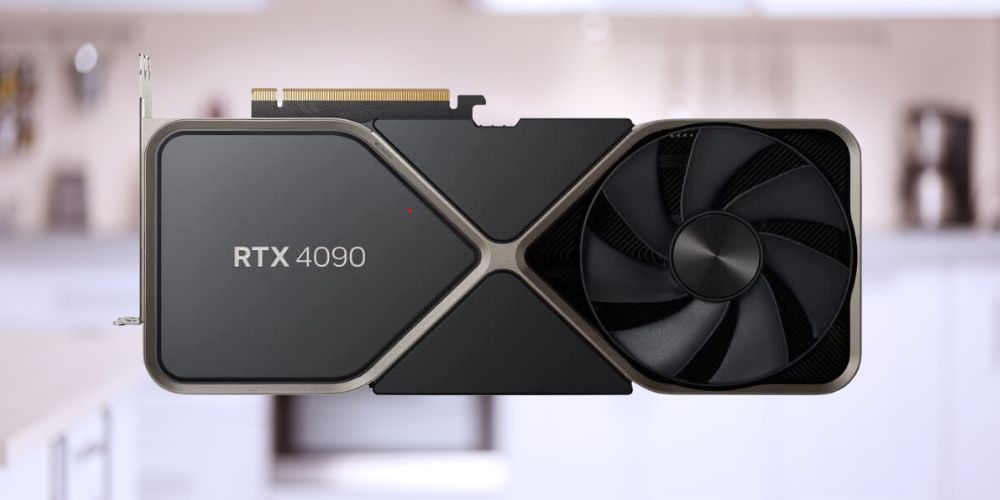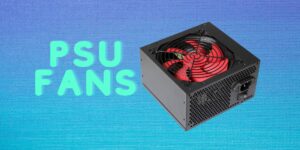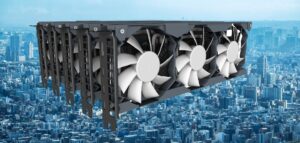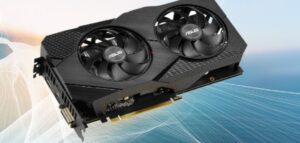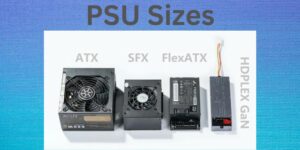Are Blower Style GPUs Good? Unveiling the Truth
When it comes to choosing a graphics card (GPU), one of the key considerations is the cooling system. There are two main types of cooling systems used in GPUs: blower style and open-air style. Blower-style GPUs have a unique design where they exhaust hot air directly out of the case, whereas open-air-style GPUs dissipate heat into the case. Blower-style GPUs are particularly useful in small form factor cases where airflow is limited, as well as in multi-GPU configurations and professional workstations. However, they also have some drawbacks, such as higher noise levels and weaker cooling performance compared to open-air style GPUs. Open-air style GPUs, on the other hand, offer better cooling performance and lower noise levels but can dump hot air into the case. Ultimately, the choice between a blower-style GPU and an open-air-style GPU depends on your specific needs and preferences.
Understanding Blower Style GPUs:
Blower-style GPUs are a type of graphics card that utilizes a unique cooling system. Unlike open-air style GPUs, which dissipate heat into the case, blower-style GPUs exhaust hot air directly out of the case. This design makes them well-suited for small form factor cases with limited airflow and multi-GPU configurations where tight spacing is required. However, blower-style GPUs also have some drawbacks. They tend to be louder than open-air style GPUs due to the higher fan speeds needed to expel hot air. Additionally, their cooling performance is often weaker compared to open-air style GPUs, which can be a concern for overclocking and heavy gaming.
Pros of Good Blower Style GPUs:
1. Effective Heat Dissipation:
Blower-style GPUs excel in scenarios with limited airflow, such as small form factor cases or densely packed systems. By expelling hot air directly out of the case, they help prevent heat buildup, thereby enhancing overall system stability.
2. Suitable for Multi-GPU Configurations:
In setups featuring multiple GPUs arranged closely together, blower-style GPUs offer a practical advantage. Their exhaust mechanism minimizes the risk of heat accumulation between adjacent graphics cards, reducing the likelihood of thermal throttling.
3. Consistent Performance:
Blower-style GPUs maintain relatively stable operating temperatures even under challenging conditions. This consistency can be beneficial for users prioritizing reliability and longevity over peak performance.
4. Small Form Factor Cases:
These GPUs are ideal for small form factor cases where airflow is limited. They are designed to exhaust hot air directly out of the case, which helps to keep the case temperature lower. This is especially important in small cases where there may not be enough room for good airflow.
5. Professional Workstations:
Blower-style GPUs are often used in professional workstations where multiple GPUs are needed for tasks like rendering and video editing. They provide a way to keep the GPUs cool while also keeping the case temperature under control.
Cons of Blower Style GPUs:
1. Increased Noise Levels:
One of the primary drawbacks of blower-style GPUs is their tendency to produce higher noise levels compared to fan-cooled alternatives. The design of the centrifugal fan, necessary for efficient exhaust, often results in louder operation, which may be a concern for users seeking quieter computing environments.
2. Limited Overclocking Potential:
Due to their focus on heat dissipation rather than maximizing cooling efficiency, blower-style GPU may not offer extensive overclocking headroom. Enthusiasts aiming to push their GPU to its limits through overclocking may find alternative cooling solutions more suitable.
3. Suboptimal Cooling Performance:
In scenarios with ample airflow, such as spacious ATX cases equipped with multiple case fans, blower-style GPUs may underperform compared to open-air designs. The restricted airflow path and lower static pressure of blower-style coolers may lead to higher GPU temperatures under such conditions.
Real-World Performance and User Experiences:
Here are some key points about the real-world performance and user experiences with blower-style GPUs:
- Blower-style GPUs tend to run hotter and louder compared to open-air-style GPUs. The single fan design and smaller heatsinks mean they need to spin faster to provide adequate cooling, resulting in more noise.
- However, in small form factor cases with poor airflow, these GPUs can actually perform better than open-air GPUs. This is because they exhaust hot air directly out of the case, while open-air GPUs dump heat into the case which can lead to higher overall temperatures.
- For multi-GPU configurations, blower-style cards are preferred as they don’t rely on case airflow and can be spaced closer together. Open-air GPUs may overheat when placed in tight quarters.
- One user reported good results with a blower-style GTX 1080 Ti, keeping temps around 60-68C under load by optimizing the fan curve. Another had a bad experience with a blower 1080 Ti that hit 90C+.
- These GPUs are commonly used in professional workstations and servers where multiple GPUs are needed in a compact space. The noise is less of a concern in these environments.
- Overall, blower-style GPUs are a niche product that excels in small cases and multi-GPU setups, but open-air GPUs are generally preferred for single GPU rigs with good airflow due to their superior cooling and lower noise. The choice depends on the specific use case.
New Insights: Are Blower Style GPUs Good?
1. Improved Cooling Efficiency:
Manufacturers have been refining the design and engineering of blower-style GPUs to enhance their cooling efficiency. This includes optimizing fan blade designs, improving heatsink materials, and implementing more efficient airflow management within the shroud. These advancements have led to better heat dissipation and reduced thermal throttling, resulting in more consistent performance under heavy workloads.
2. Noise Reduction Technologies:
One of the primary criticisms of blower-style GPU has been their relatively higher noise levels compared to open-air coolers. In response, manufacturers have introduced noise reduction technologies such as advanced fan control algorithms, vibration-dampening materials, and redesigned fan blades. These innovations aim to minimize noise without compromising cooling performance, making blower-style GPU more appealing for users sensitive to acoustics.
3. Thermal Throttling Mitigation:
Thermal throttling occurs when a GPU reduces its clock speeds to prevent overheating, impacting performance. These GPUs, particularly in compact cases with limited airflow, may be more prone to thermal throttling due to their enclosed cooling design. To mitigate this, manufacturers are implementing smarter thermal management solutions, such as dynamic fan speed adjustment based on temperature sensors and improved heat dissipation through heatsink enhancements.
4. Application-Specific Performance Variations:
The performance of blower-style GPUs can vary depending on the specific application or workload. In scenarios where consistent airflow is crucial, such as multi-GPU configurations or systems with restricted ventilation, blower-style GPUs may outperform open-air coolers due to their directed exhaust airflow. Conversely, in environments with ample airflow and sufficient space, open-air coolers may offer better cooling efficiency and potentially higher overclocking potential.
5. Customization and Aftermarket Solutions:
Enthusiasts and system builders have increasingly turned to customization and aftermarket solutions to optimize the performance and cooling capabilities of blower-style GPU. This includes aftermarket heatsinks, shroud modifications, and alternative fan configurations aimed at improving thermal performance and reducing noise levels. While these modifications require technical expertise, they offer users more flexibility in tailoring their GPU cooling solutions to specific requirements.
Conclusion:
In conclusion, blower-style GPUs offer a unique solution for specific use cases, particularly in small form factor cases and multi-GPU configurations where airflow is limited. While they excel in expelling hot air directly out of the case, they often come with trade-offs such as higher noise levels and potentially weaker cooling performance compared to open-air style GPUs. The scarcity of blower-style options, particularly for high-end GPUs like the RTX 3090, may impact professionals and researchers who rely on these GPUs for their workstations. Ultimately, the choice between a blower-style GPU and an open-air-style GPU depends on the specific needs and priorities of the user. By understanding the advantages and disadvantages of these GPUs, users can make informed decisions about the best cooling solution for their system.
FAQs:
1. Are blower GPUs suitable for overclocking?
- Blower-style GPU might not be the best choice for aggressive overclocking due to potential thermal limitations.
2. Can blower GPUs be quieter with custom fan curves?
- Yes, configuring custom fan curves can help balance performance and noise levels. However, they might still be louder than some other cooling solutions.
3. Do all manufacturers produce blower GPUs?
- Many manufacturers offer blower GPUs, each with their own design and cooling efficiency. Researching specific models is recommended.
4. Are blower-style GPUs recommended for gaming laptops?
- Yes, blower-style cooling can be beneficial for gaming laptops to direct heat away from sensitive components within a confined space.
5. Can aftermarket modifications enhance blower-style GPU performance?
- While some modifications are possible, they might void the warranty. It’s advisable to explore alternatives if significant modifications are desired.
Last Updated on 28 June 2024 by Ansa Imran

Ansa Imran, a writer, excels in creating insightful content about technology and gaming. Her articles, known for their clarity and depth, help demystify complex tech topics for a broad audience. Ansa’s work showcases her passion for the latest tech trends and her ability to engage readers with informative, well-researched pieces.

